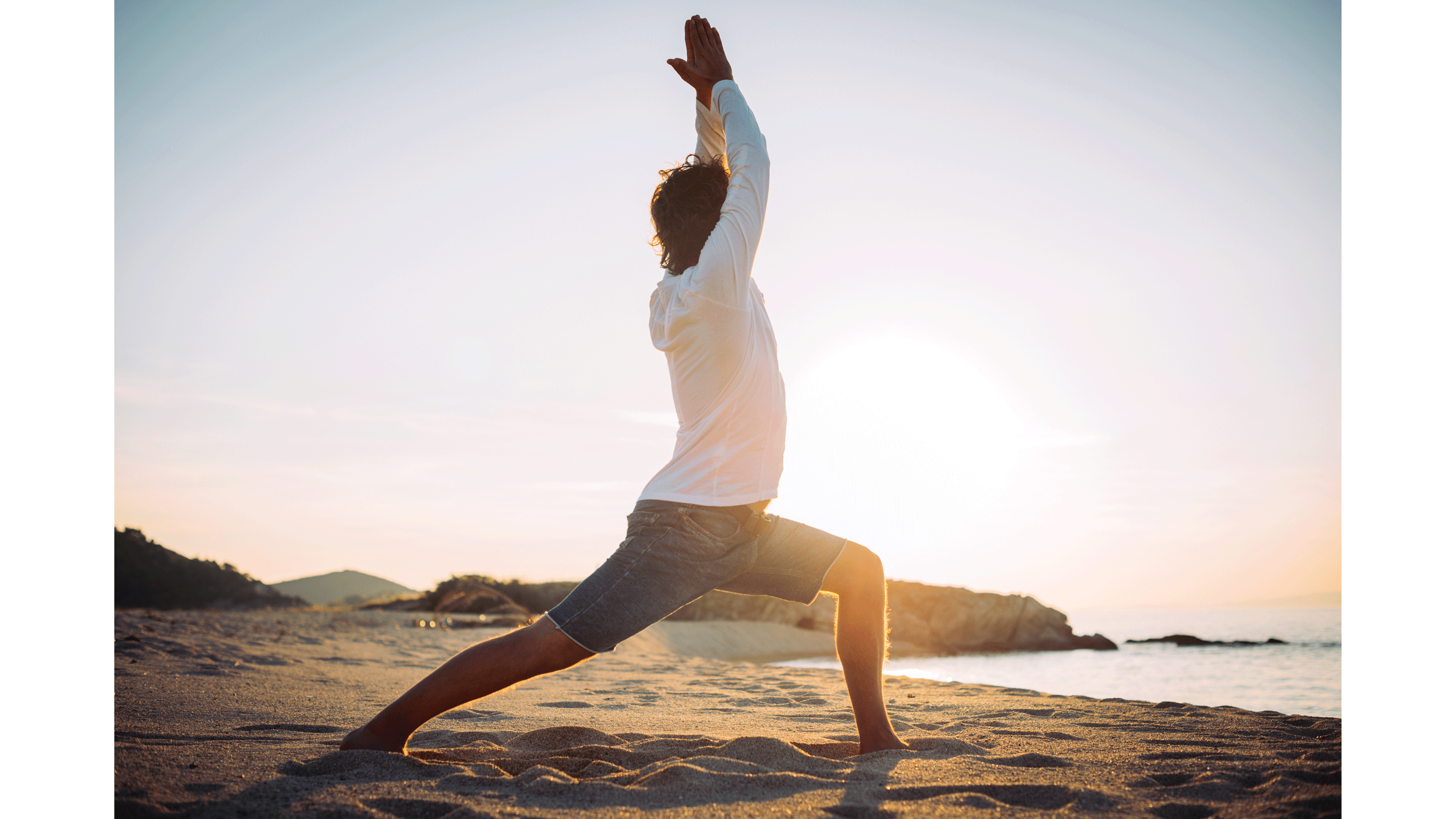Squaring the Hips in Warrior I

(Photo: Drazen_)
Nanci Kelly
Lisa Walford’s reply:
Nanci, you have lots of company! Short achilles tendons, tight iliopsoas (hip flexors), or even bow legs make this challenging. Once you understand how to create space (rather than compression) in the lower back and the back waist in a symmetrical variation of the pose, it will be easier to address the challenge of bringing the back hip forward in the classic asana.
Standing near a wall, face the center of the room and take your right leg back behind you. Turn your back foot out and press your back heel against the wall. Align your front heel with the back arch. As you draw the outer left hip forward, initiate the action from the top of the hamstring. Next, shift your attention from the pelvis to the action in the legs. Widen the inner back thigh toward the outer thigh, as if you were pulling wrinkles out of a bed sheet. Move the leg as one unit, knee straight, and widen the back of the leg toward the outer hip.
As you attempt any new and subtle action, the mind-nerve-muscle current will flicker, so hold steady the action in your mind and keep charging the inner back thigh to widen toward the outer thigh. While broadening the back thigh, press the heel into the wall and slowly bend the front knee. In all of the standing postures, if we emphasize correct action in the legs and torso, the pelvis will be drawn into optimal alignment.
Now let’s modify Virabhadrasana I to facilitate the turning of the pelvis by taking the back foot up the wall. Press the foot against the wall while you bend the front knee into a lunge. Make sure the front knee is directly above the heel, not beyond. With your hands on your hips, draw both hip bones to face the center of the room. Draw the quadriceps (the front thigh) up toward the navel, as if you could pull a rubber band from above the knee, across the front of the thigh and pelvis toward the front ribs. When you engage the legs and torso and lift the front of the pelvis up toward the ribs, you lengthen the lower back.
Finally, coordinate the resistance of the back foot pressing against the wall with widening the back thigh and lifting the front of the thigh. This sequence should widen the sacroiliac area, lengthen the lower back, and help elongate the front of the body. Practice studiously, noticing how each nuance of movement affects your leg and lower back. You will learn to navigate the shifting currents of energy through the bones, muscles, tendons, and nerves. With time, your practice will mature and grant you a calm, steadfast equilibrium between your body, mind, and senses.
Lisa Walford is a senior intermediate Iyengar Yoga instructor and has been teaching for more than twenty years. She is one of the directors of the Teacher Training Program at Yoga Works, in Los Angeles. She has served on the faculty of the 1990 and 1993 National Iyengar Yoga Conventions and studies regularly with the Iyengars.